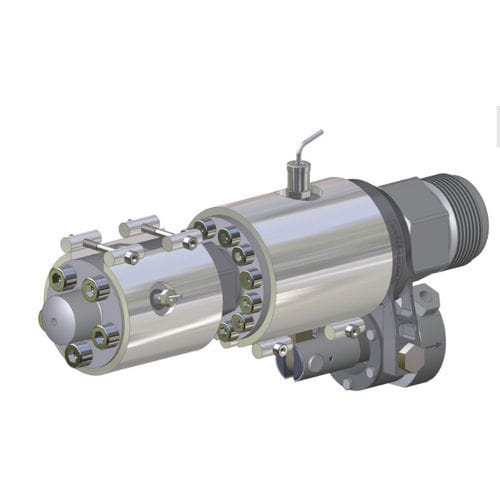Under GasInjectionTechnology GIT one understands gas delivery in the mass core of the injected part. Principally one differentiates between two different types of injection process:
• Injection in the mold (See mold injectors)
• Gas delivery via the machine nozzle (Theme of this documentation)
How does it work?
The gas searches the easiest way through the soft core of the injected part and displaces the mass until the cavity is filled out.
Since the initial attempts with Gas / Water injection technology, the company Herzog AG has successfully set itself apart with gas introduction components (injectors and machine nozzles).
The machine nozzle is used here, where the gas introduction is to be made by the sprue bushing. This has the advantage that no adjustments must be made at the mold. The resulting opening at the injected part from the gas introduction, can be closed by postinjection.
Arguments for the machine nozzle type GM:
• Assured gassing via the machine nozzle by the core of the bushing
• Shorter cycle times - increased productivity
• Process reliability and repeatability
• Problem-free installation in a short time
• Usability with increased back pressure - improved homogenization
• Good self-cleaning effect
• Compact design
• Interchange ability of all parts
• Easy to dismantle
• Variably applicable as shut-off nozzle option



